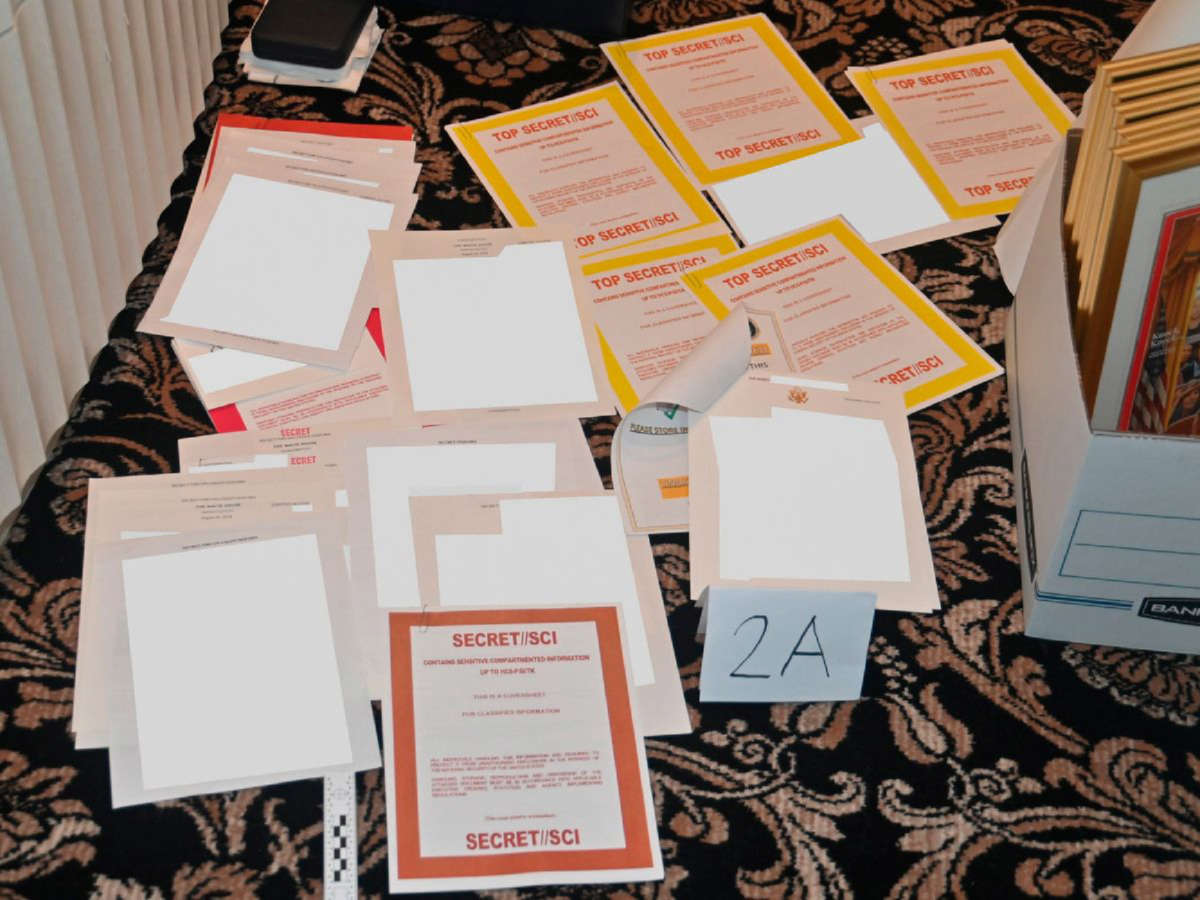In response to former President Donald Trump’s request that a special master examine classified documents that were retrieved from his Mar-a-Lago property earlier this month, the U.S. Department of Justice (DOJ) has asserted that Trump and his inner circle likely attempted to obstruct the FBI’s investigation into the mishandling of the documents.
Trump asked for a special master — an independent reviewer, typically a former judge — to discern whether or not certain materials retrieved were privileged. In response to the request, the DOJ said that the former president “lacks standing” to make such an ask “because those records do not belong to him”; as presidential records, they belong to the federal government.
The DOJ then explained that a filter team — an independent unit of investigators tasked with removing such information — “has already completed its work of segregating any seized materials that are potentially subject to attorney-client privilege, and the government’s investigative team has already reviewed all of the remaining materials.”
There will be a hearing on the issue on Thursday, and a final decision on the special master will likely be made shortly after.
The DOJ’s brief, which is 36 pages long, details how Trump and his advisers refused to turn over classified documents when originally ordered to do so earlier this year. It also reveals that Trump likely impeded the inquiry into documents that he improperly removed from the White House.
“Government records were likely concealed and removed,” the DOJ said, adding that “efforts were likely taken to obstruct the government’s investigation.”
A subpoena that was carried out in June ordered Trump to turn over all classified documents that remained at Mar-a-Lago and to attest that he had searched the premises for any additional classified material. Trump’s lawyers did so, and said that no more documents of a classified nature remained.
After surveillance footage and a tip from an informer suggested to DOJ officials that more material was being kept at the estate, the FBI executed a search warrant on the premises and found more than 100 additional classified items, the department said. The FBI later confirmed that Trump had kept classified material in areas beyond the storage room where he had been allowed to temporarily store some of the records.
A photograph of documents found in Trump’s office was shared in the court filing. Several of the files included headings indicating they were “top secret,” the highest level of classification for government records.
NEWS: DOJ’s new filing includes. photo of the classified documents found at Mar-a-Lago on Aug. 8. https://t.co/nm567c96bi pic.twitter.com/0U2hoSogxQ
— Kyle Cheney (@kyledcheney) August 31, 2022
According to reporting from The Washington Post, at least one of the cover sheets of the docs featured included an “HCS” marking, indicating that it was national intelligence relating to secret human sources.
Trump and his supporters have previously tried to claim that the documents were mere mementos from his time in office. But according to the DOJ, a number of the documents that were retrieved were so highly classified that some FBI agents had to get special clearances before they could conduct the search in August.
Trump loyalists immediately sought to downplay the revelations, and GOP members of the House Judiciary Committee mocked the image in a tweet.
“That TIME Magazine cover was huge threat [sic] to national security,” the tweet said, following the statement with an emoji indicating that the comment was sarcastic.
Later, the committee errantly claimed in a tweet that the DOJ “did nothing” about documents being missing for 18 months and “dumped” the docs on the floor of Mar-a-Lago “for a photo op.”
In fact, the National Archives and Records Administration (NARA) had sought these documents since before Trump’s departure from the White House, as it was well-known that Trump was keeping presidential records in the residence wing of the building. Trump refused to comply with their request for the entirety of 2021; after NARA warned that it would involve Congress in the matter, Trump ultimately agreed to allow them to retrieve documents in January 2022. Soon after, the agency contacted the DOJ about the classified nature of the materials. The DOJ’s attempts to retrieve the documents culminated with the search warrant that was executed at Mar-a-Lago in August, which was deemed necessary by the department due to Trump’s violation of the subpoena.
In response to the photograph from the DOJ, Trump hinted that the evidence might have been planted.
“Terrible the way the FBI, during the Raid of Mar-a-Lago, threw documents haphazardly all over the floor (perhaps pretending it was me that did it!), and then started taking pictures of them for the public to see,” Trump wrote on his Truth Social account. “Thought they wanted them kept Secret? Lucky I Declassified!”
Had Trump actually declassified the documents, there would be a government record showing that he had done so, which neither he nor his legal team has been able to produce. Even if the documents were declassified, however, it’s possible that Trump violated the Espionage Act, which doesn’t differentiate between classified and declassified docs when determining whether a crime took place.
At least 18 of Trump’s former high-level staffers have disputed his claims that he declassified the documents through a “standing order,” and one of the staffers has described the claim as “bullshit.”


